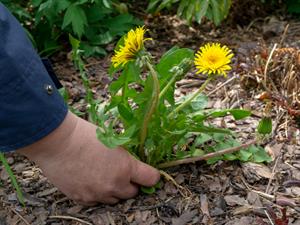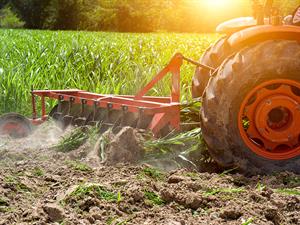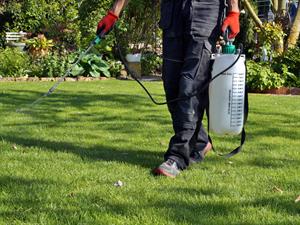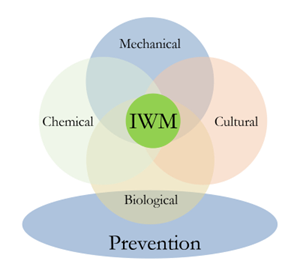PDF chapter test TRY NOW
Weeds are unwanted or undesirable plants growing in an agricultural field.
Weeds grow along with crops and compete for nutrients, sunlight, water, space, and other resources. Thus, weeds affect the growth and development of crops. They cause undernourishment of crops and lead to low yield.
The removal of weeds is called weeding.

Weed removal
The process of weeding is necessary to increase the productivity of crops. The best time for the removal of weeds is before they produce flowers and seeds.
Types:
There are different types of weeds. Some affect the growth of other plant, some interfere during harvesting, and a few are poisonous.
Controlling mechanism:
Farmers use many ways to remove weeds and control their growth. The major ways to control weeds include:
1. Mechanical method - The most common method where weeds are destroyed physically. Weeding or hand pulling with the help of weeding holes is the oldest and most efficient method for controlling weeds.

Manual removal
2. Tillage method - Destroys weeds of all categories. It is performed before sowing crops. Weeds are uprooted, killed, which then dries up and get buried in soil and exposed to the sun's heat by deep ploughing.

Mechanical removal
3. Crop rotation - proper crop rotation controls the crop associated and parasitic weeds.
4. Summer tillage - Deep ploughing is performed after the harvest of rabi crops to expose the underground parts of weeds to direct sunlight. It is performed during the summer months, which helps destroy annual and perennial weeds.
5. Biological weed control - Biological agents like insects and pathogen are used to control weeds. The aim of biological control is not eradication but is reduction and regulation of weed population.
6. Usage of chemicals - Chemicals used for killing or inhibiting the growth of weeds are called herbicides. This method is useful and effective in weed control. Herbicides are mixed with water and sprayed over the crops using a sprayer. They kill only the weeds protecting the main crop.

Spraying chemicals
7. Integrated weed management (IWM) - Combines different agronomic practices and herbicides to manage weeds. IWM reduces the reliance on one weed control technique. Mechanical, biological, cultural, and chemical methods are included in integrated weed management.

Side effects of herbicides and weedicides:
The weedicides applied in the cropland stays as a residue in the plant's leaves, fruits, or seeds and cause many unfavourable health hazards if consumed. It also affects the farmers while spraying. So farmers need to take extreme care while spraying weedicides. Many weedicides were banned due to their ill effects on human health.
Important!
There are nearly 30000 species of weeds present in the world. Among these, 18000 species cause a serious crop loss. Continuous use of the same method causes the emergence of tolerant species. Therefore, a combination of different weed control methods must be used. A combination of different weed control methods minimizes the loss caused by weeds in crops and prevents environmental pollution.
